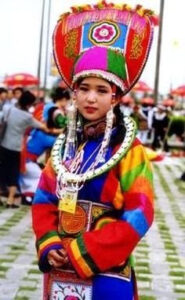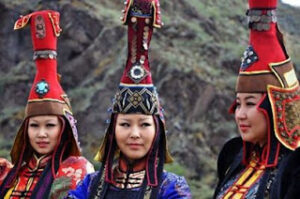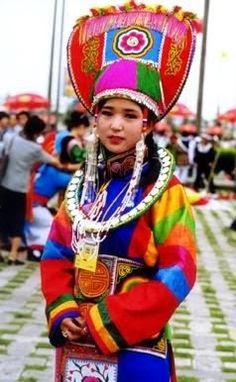Some Turkic tribes converted to Buddhism after the 7th century. Turks used the name of Buddha as Burkan.
Some of the world’s converts to Islam have a strong Buddhist background: they are Turks, Afghans, Pakistanis, Indonesians and Malays.
Let’s take a closer look at how Buddhism spread among the first of these.
Turkic Shahs
The earliest Turkish community to accept Buddhism was the Turkic Shahs. They ruled in northwestern India from the middle of the third to the beginning of the fourth century, and then moved west to central today’s modern Afghanistan, and from there to northern and central Pakistan in the mid-fifth century.
Inheriting an understanding of Buddhism, which is a mixture of both Hinayana and Mahayana, from their predecessors such as the Kushan and Western Gokturks living in that geography, they became the strong guardians of the great monastic complexes established in previous periods.
Over the late VIII. and IX.centuries, the Turkic Shahs became vassals and allies of the Tibetan Empire, contributing to the spread of Buddhism in Tibet.
Eastern and Western Turks (Göktürks)
Another large Turkish community that accepted Buddhism was the Old Turks, who gave their name to the Turkic communities. Eastern Göktürk Empire, reigned in Mongolia from the end of the VI.century until the middle of the VIII century.
Under royal patronage, Indian, Central Asian, and Chinese masters translated most Buddhist texts into Old Turkic. Some Buddhist technical terms and words in Old Turkic were accepted as standard throughout Central Asia and were later used by the Uyghurs and Mongols.
The ancient Turks included in their understanding of Buddhism the Zoroastrian gods they were familiar with from other Central Asian communities, as well as the veneration of the old traditional Turkic gods or ‘tengris’. This eclectic structure was taken over by the Uyghurs and Mongols and preserved as it is.
At the turn of the VIII. century, when one of the Eastern Gokturk royal princesses married the Tibetan Emperor, he and many Buddhist monks were invited to Tibet from Khotan, in the south of East Turkestan.
Western Göktürk Empire was one of the great protectors of Buddhism from the beginning of the VII. century till the beginning of VIII. century. Its rulers built new monasteries in Uzbekistan. Türgiş tribe, a branch of Western Göktürks, pioneered the spread of Buddhism in Kyrgyzstan and southeastern Kazakhstan with the beginning of the VII. century and beginning of VIII.century. The Turgish were also allied with Tibet.
At the beginning of the eighth century, the Turgish state in Kyrgyzstan and Kazakhstan was replaced by another Eastern Gokturk tribe that embraced Buddhism, and the Karluks, allies of Tibet.
A branch of the Karluks, the Karakhanids established a kingdom in the middle of the ninth century that stretched from eastern Kyrgyzstan to the Kashgar region in southwestern East Turkestan.
For almost a century, the Karakhanids maintained a belief that was a mixture of Kashgar Buddhism and their own shamanic traditions.
Uighurs
However, the most famous form of Buddhism among Turkic communities is seen in Uyghurs from East Turkestan (Xinjiang) . By migrating from Mongolia to the Turfan region in today’s Northeast Xinjiang in IX.century; The merchant communities from the Sogdian region in what is today Uzbekistan adopted a mixed form of beliefs held by the Tocharistanians of the Turfan region and the Chinese traders in the region.

This form spread throughout the region thanks to the Karahoca Uyghur kingdom, which was influential throughout the present-day Xinjiang region, except for Kashgar and Hotan in the southwest.
The Uyghurs, on the other hand, have their own form of Buddhism as well as their alphabet and administrative skills. It was handed over to the Mongols led by Genghis Khan at the beginning of the century.
In the second half of the XIII. century, they changed their practices and accepted Tibetan Buddhism, making their Mongol allies follow. The Uyghurs translated a large number of Buddhist texts from Sanskrit, Sogdian, Tocharian, Chinese and Tibetan into their Turkic languages, and were also pioneers in translating Buddhist texts into Mongolian.
Translations that retained most Sanskrit technical terms were modeled after the Mongols. Buddhism, XVII among the Uighurs. It continued to exist for centuries.
Other branches of the Uighurs also followed Buddhism. One of them was the branch that followed Buddhism, which came from Mongolia to the Chu River valley in the northwest of Kyrgyzstan in the middle of the IXth century, under the tutelage of the Karluks and, before them, the Turgish Turks.
Another was the branch that adopted Kashgari Buddhism, which was also adopted by the Karahan Turks who migrated from Kashgar in East Turkestan and settled in the region a century ago.
The third group known as the Yellow Uyghurs was again the branch from Mongolia in the mid IX. century that settled in what is now China’s Gansu province, which was then ruled by the Tibetan Empire. Although few in number, the Yellow Uyghurs still follow Tibetan Buddhism today.
Tuva
The last Turkic people to accept Buddhism were the Tuvan people in northern western Mongolia, today known as Siberia. Since the beginning of XVIII. century, they follow Tibetan Buddhism together with the Mongolian sub-branch, with whom they have been in close contact for centuries.
Vizier Tonyukuk also opposed this idea and said that Buddhism weakens the sense of domination and power in people, that this is not the way of strength and warfare, and that if the Turkish nation is to live, these religions and temples should not be brought into the country.

Bilge Kagan made an effort to spread Buddhism among the Turks for a while. He had the desire to make the Turks Buddhist by building temples. Bilge Kagan, following the advice of the Vizier Tonyukuk, whom he respected very much, did not implement these plans that he had in mind.
Source: Buddhism Among Turkish Communities, Alexander Berzin, Cairo, Egypt, November 1995. First published source: Berzin, Alexander. Buddhism and Its Impact on Asia. Asian Monographs, no. 8. Cairo: Cairo University, Center for Asian Studies, June 1996. Translated into Turkish by Güzin A. Yener
Burkan
Burkan, Burhan = Buddha
The name given to the religion of Buddha and Buddha by the Turks, in the past, in Central Asia .
Buddha (Buddha). Burkan < chinese bi’iu’t + Turkish kan (han, khan, khan).
The perfect sage, of course, is the god of god(s) Buddha themselves.
Burkanism: Turkish Buddhism. The Turks’ first relations with Buddhism began with the Toba Turks attacking China. For this reason, Toba Turks’ understanding of Buddhism is mixed with shamanism. Later, the Uyghur Turks also adopted Buddhism. Almost all Buddhist works are translated into Uyghur language and important terms of Buddhism are translated into Turkish. The basis of Uighur art is based on old Turkish beliefs and lifestyle, Buddhism, Manicheism etc. It is based on the new order brought by religions. The synthesis realized in this new system has revealed a Uyghur art that has different characteristics from other art circles. Buddhist temples and especially Mani temples owe their real development to the Uighur period. Uyghur monasteries and temples formed the source of Seljuk and Ottoman complexes.
Source: Early Turkish Art, Yaşar Çoruhlu, Kabalcı Publishing House, 2007
Buddhism, which emerged in B.C. VI.century India began to spread outside of India in BC III. century; It extended to Central Asia, China, and Korea after 372; His settlement in Tibet only took place in the VIII. century.
Buddhism in West Turkestan could not hold on against Zoroastrianism and Mani religion supported by the Sassanids; It has obtained more suitable neighborhoods in the settled circles of East Turkestan; Buddhist complexes were erected along the caravan routes to China and continued their activities for centuries.
Hotan and Miran on the southward caravan route; along the road to the north, in the cities of Tumşuk and Kuça, which have been started to be established between with III-IV. centuries, Buddhist monks called “Toyin” in Buddhist monasteries called “Vihara” (Turkish “Vihar”), made the propaganda of this religion (Esin, 1978:59).
Buddhism spread among the Karluks. Among the foreign religions that Turks entered, one of the belief systems that affected them the most is Buddhism of Indian origin. Buddhism, the most distinctive feature of which does not include a superior being to be worshiped, is a doctrine or philosophy based on the free examination and testing of everything (Turan, 1994:104).
In accordance with the basic belief of reincarnation (transmigration), living things are reborn many times in different patterns after they die until they reach Nirvana (eternal happiness) (Ocak, 2000:66).
Buddhism was born about 2500 years ago, when Prince Siddhata Gotama, known today as Buddha, experienced an awakening and enlightenment at the age of 35. Gotama was born into a royal family in North India. But over time, he realized that wealth and luxury are no guarantees of happiness. He left everything and lived in the forest for a long time. After six years of studying meditation and human happiness, he became enlightened. He continued his life teaching the principles of Buddhism until he was 80 years old.
For many people, Buddhism is a “philosophy” and “way of life” beyond religion. It is a philosophy because it carries the meanings of love and hope. Buddhism, on the one hand, guides the moral life, on the other hand, it enables people to be aware of their actions and thoughts and to reach true happiness (White, 1993:22).
The acceptance of Buddhism by the Göktürk Khan To-Po Han during the period when a shamanism specific to Turks was common, caused this religion to spread among the Turks (Turan, 1994:103).
While the Indians and Chinese were also scattering the ashes of a Buddha’s cremated corpse in seven countries, the Turks accepted Buddhism differently and did not particularly adopt the beliefs about the human dead and not being buried.
—————Buddhist Turks———- –
- Yellow Uyghurs. Kansu province, China
- Tuva Rep. Russia
Yellow Uyghurs. Kansu province, China The Yugurs, Yughurs, Yugu or Yellow Uyghurs, as they are traditionally known, are a Turkic group and one of China’s 56 officially recognized ethnic groups, consisting of 16,719 persons according to the 2000 census. The Yugur live primarily in Presented by Yugur Autonomous County in Gansu, China. They are mostly Tibetan Buddhists.
- Total population 15,000 (est.)
- Regions with significant populations: Presented by Yugur Autonomous County, Gansu, China
- Languages: Western Yugur, Eastern Yugur
- Religion: Tibetan Buddhism, Tengrism (Shamanism)
- Related ethnic groups:Old Uyghurs, other Turkic and Mongolic peoples
Tuvans. Tuva Rep. Russia The Tuvans are a Turkic indigenous people of Siberia who live in Russia (Tuva), Mongolia, and China. They speak Tuvan, a Siberian Turkic language. They are also respected in Mongolia as one of the Uriankhai peoples.
Tuvans have historically been cattle-herding nomads, tending to herds of goats, sheep, camels, reindeer, cattle and yaks for the past thousands of years. They have traditionally lived in yurts covered by felt or chums, layered with birch bark or hide that they relocate seasonally as they move to newer pastures. Traditionally, the Tuvans were divided into nine regions called khoshuun, namely the Tozhu, Salchak, Oyunnar, Khemchik, Khaasuut, Shalyk, Nibazy, Daavan and Choodu, and Beezi. The first four were ruled by Uriankhai Mongol princes, while the rest were administered by Borjigin Mongol princes.
Tuvans
Tuvans in Russia.
Ttotal population c. 300,000
Regions with significant populations
-
- Tuva 263,934
- Russia (excluding Tuva) 25,000
- Mongolia 5,169
- China 3,900 (as Mongolian)
- Ukraine 43
- Languages: Tuvan, Russian, Mongolian, Chinese
- Religion: Predominantly: Tibetan Buddhism (“Lamaism”), Tengrism Minority: Orthodox Christianity, Atheism
- Related ethnic groups:Turkic, Mongol and Ket peoples.




















